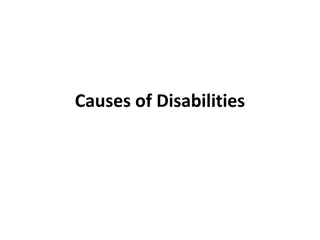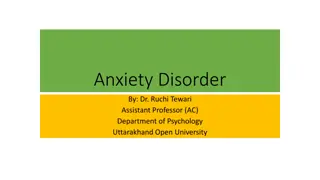Understanding Neurocirculatory Dystonia: Causes, Types, and Symptoms
Neurocirculatory dystonia is a condition characterized by a permanent impairment of nervous regulation of vascular tone, impacting blood pressure and cardiac muscle. Triggered by various stressors, the disease presents different types such as cardiac, hypertonic, hypotonic, and mixed. Symptoms include heart rhythm disorders, endocrine diseases, swelling, asthenia, respiratory issues, and vegetative crises. Proper diagnosis and treatment by a neurologist are essential for managing the condition effectively.
- Neurocirculatory Dystonia
- Nervous Regulation
- Cardiovascular Health
- Stress Management
- Disease Symptoms
Download Presentation

Please find below an Image/Link to download the presentation.
The content on the website is provided AS IS for your information and personal use only. It may not be sold, licensed, or shared on other websites without obtaining consent from the author. Download presentation by click this link. If you encounter any issues during the download, it is possible that the publisher has removed the file from their server.
E N D
Presentation Transcript
Odesa National Medical University Department of internal medicine 1 with course of cardio-vascular pathology Practical class 25:"Neurocirculatory dystonia"
Neurocirculatory dystonia is a permanent impairment of nervous regulation of vascular tone, causing problems with blood pressure and cardiac muscle. The disease is triggered by psycho-emotional, intellectual or physical stress affecting negatively a person's performance and adaptability to changing environmental conditions.
Neuropathologists distinguish several types of dystonia, depending on the most prominent signs of the disease: ardiac type. Such a course is virtually unrelated to changes in blood pressure, but the patient is experiencing chest pain and impaired cardiac activity; hypertonic type. It is diagnosed in case of unbalanced response of the autonomic nervous system to stimuli. It is manifested as a sharp pressure increase in response to stress factors and is accompanied by rapid heart palpitation, pressure in the temples and other symptoms;
hypotonic type. In response to stress, pressure decreases sharply causing weakness, excessive sweating, limb numbness, faintness; mixed type. Neurocirculatory dystonia manifests itself unpredictably, the patient is confronted with the full spectrum of disease signs. It is characterized by a sudden change in pressure affecting adversely the vascular and cardiac muscle tone and results in the wear and thinning of their walls. Only a qualified neurologist after the examination can determine the type and develop an effective treatment regimen.
Causes and symptoms heart rhythm disorder: tachycardia or bradycardia, painful chest, feeling of compression, distinct pulse of cervical or facial vessels; endocrine diseases (thyroid disease, diabetes mellitus, etc.); frequent swelling after bedtime; development of asthenia: constant feeling of physical weakness, increased fatigue, decrease in cognitive functions inability to concentrate and uptake new information; respiratory system disorders: feeling of incomplete inhalation , labored breathing on the lightest loads. The symptoms worsen at night. A person may face vegetative crises: sudden headache, fainting.
Neuropathologists distinguish several major causes of pathology: genetic predisposition; unhealthy lifestyle: lack of sleep pattern, alcohol abuse, hypodynamia; constant high level of stress. Neurocirculatory dystonia also develops in response to negative environmental factors an unfavorable environmental background, increased radioactive radiation. Be sure to exclude vascular pathology: stenosis, aneurysm, malformation.
Treatment procedure Blood pressure disorder is caused not only by neurocirculatory dystonia, but also by numerous cardiac and vascular impairments. Therefore, the tasks of the doctor include studying the clinical picture and conducting modern diagnostics. After the initial examination, the patient is referred for blood tests and additional examinations (for example, ECG, ultrasonography of heart and blood vessels). Based on the results, a treatment plan is developed. Usually, a neuropathologist prescribes a number of drugs: nootropics to maintain the central nervous system, sedatives to reduce stress and reduce the frequency of relapses, pressure regulators























